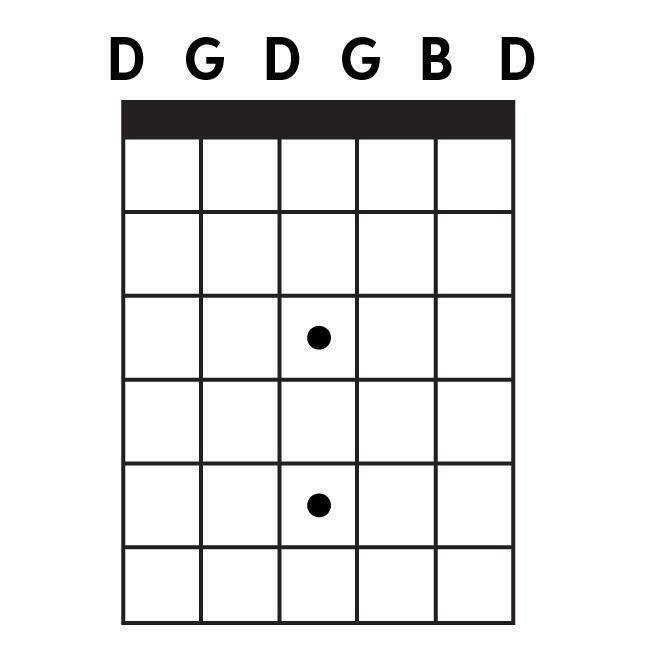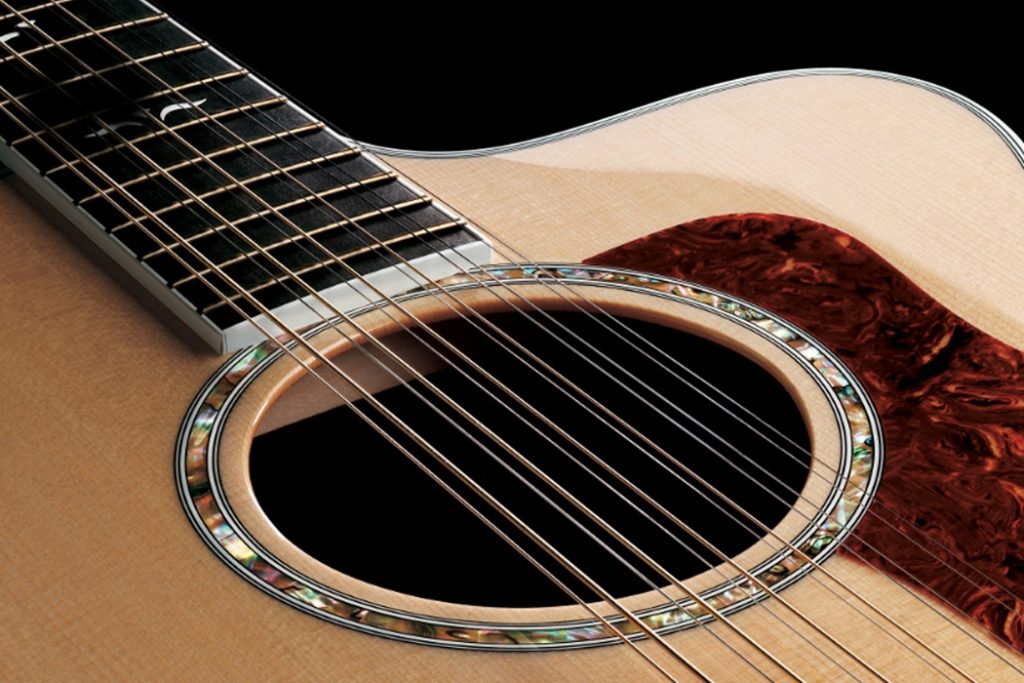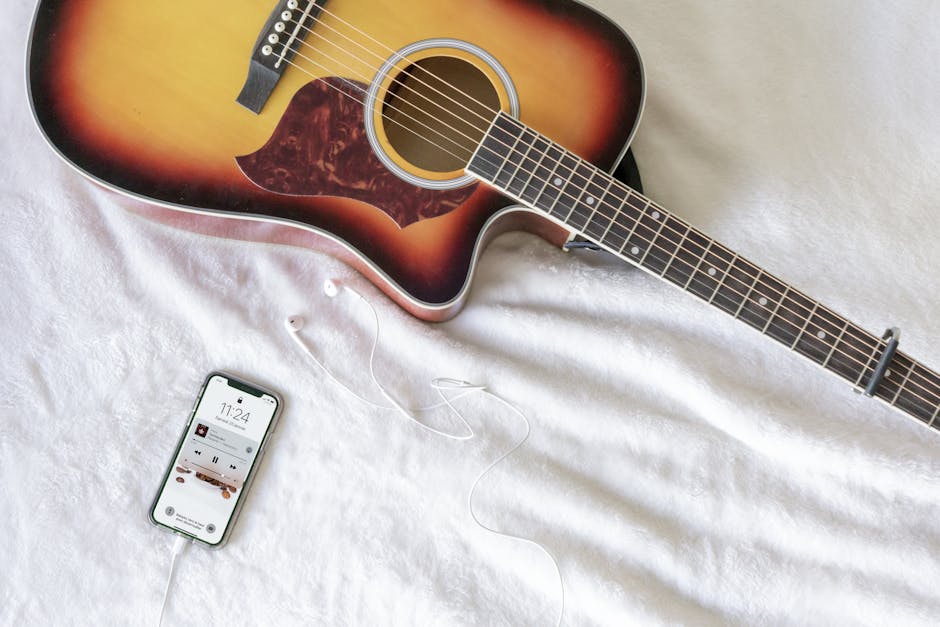Are you tired of strumming the same old tired chords on your guitar? Ready to shake things up and unleash a medley of new sounds? Look no further, my fellow string strummers, because open tunings are here to rescue your music from the depths of basic boredom! Get ready to set your strings free and discover a whole new world of musical possibilities. It’s time to tune in, turn up, and let the creativity flow with open tunings for your guitar.
Contents
- 1 Exploring the Basics of Open Tunings
- 2 The Creative Advantages of Open Tunings
- 3 Mastering Common Open Tunings: D, G, and E
- 4 Expanding Your Sound Palette with Advanced Open Tunings
- 5 Incorporating Open Tunings into Different Genres
- 6 Tips for Smooth Transitioning Between Standard and Open Tunings
- 7 Maintaining Your Guitar in Optimal Condition for Open Tunings
- 8 FAQs
- 9 Rock On with Open Tunings!
Exploring the Basics of Open Tunings
Open tunings may sound intimidating, but they’re actually quite simple once you get the hang of them. Think of it like unlocking a secret code to make your guitar sing in a whole new way. So grab that tuning peg and let’s dive into the basics!
First things first, open tunings involve tuning your guitar strings to a specific chord, allowing you to play different chords and melodies with ease. It’s like having cheat codes for your guitar playing. With just a few tweaks, you can transform your standard tuning into a whole new sonic landscape.
Some popular open tunings to explore include:
- DADGAD: This Celtic-inspired tuning will have you feeling like you’re playing in the lush green hills of Ireland.
- Open D: Perfect for those soulful slide guitar riffs that make you feel like a blues legend.
- Open G: Keith Richards’ secret weapon for crafting those iconic Rolling Stones riffs that we all know and love.
So why not shake things up and experiment with open tunings? Your guitar will thank you for the fresh new sounds, and you might just discover a whole new world of musical possibilities. Who knows, you might even stumble upon the next guitar revolution!

The Creative Advantages of Open Tunings
Open tunings are like the secret ingredient in a musician’s recipe - they add flavor, depth, and a whole lot of spice to your music. Whether you’re a seasoned pro or just picking up the guitar for the first time, open tunings can take your creativity to new heights. Here are some of the creative advantages that come with exploring open tunings:
- **Unique Sounds:** Open tunings offer a fresh sound that can’t be replicated with standard tuning. It’s like discovering a new color on your musical palette - vibrant, exciting, and totally unexpected.
- **Inspiration Boost:** Stuck in a creative rut? Open tunings can be just the kick in the pants you need to get those creative juices flowing again. The unfamiliarity of the tuning forces you to think outside the box and approach your instrument in a whole new way.
- **Instant Gratification:** With open tunings, even the simplest chord shapes can sound rich, full, and satisfying. It’s like hitting the musical jackpot – you don’t have to work as hard to achieve that lush, full-bodied sound.
So, whether you’re strumming a laid-back folk tune or shredding a face-melting rock solo, open tunings are your ticket to a whole new world of musical possibilities. Embrace the unknown, experiment freely, and let your creativity run wild with the endless possibilities of open tunings.

Mastering Common Open Tunings: D, G, and E
So you’ve decided to delve into the world of open tunings. Congratulations! Prepare yourself for a wild ride full of funky chords and sweet melodies. Today, we’re focusing on three of the most common open tunings: D, G, and E. These tunings are like the holy trinity of alternate guitar setups, so let’s dive right in!
First up, we have the D tuning. Picture this: your guitar strings are tuned to DADGBE. That’s right, DAD. It’s like your guitar is giving you a big, warm hug. With D tuning, you can easily play those hauntingly beautiful drone notes and create some seriously moody vibes. Plus, it’s great for playing slide guitar and impressing your friends at jam sessions. Trust me, they’ll be in awe of your newfound six-string prowess.
Now let’s talk about G tuning. We’re talking DGDGBD, folks. Get ready to strum some power chords like you’ve never strummed before. With G tuning, you can easily play folk, blues, and even some country tunes with ease. It’s like your guitar has unlocked a whole new level of musical possibilities. So grab your trusty axe and get ready to explore the sonic landscape of G tuning. Your ears will thank you.
Last but not least, we have E tuning. EBEGBE is the name of the game here, and boy, oh boy, does it sound sweet. E tuning is like the comfort food of open tunings – familiar, satisfying, and oh so delicious. Whether you’re playing acoustic ballads or rocking out on an electric guitar, E tuning has got you covered. So go ahead, strum those open strings and bask in the glory of E tuning. You won’t regret it!

Expanding Your Sound Palette with Advanced Open Tunings
So, you’ve mastered standard tuning and you’re ready to take your guitar playing to the next level. Why not expand your sound palette with some advanced open tunings? Think of it as adding more colors to your musical canvas!
One popular open tuning to try is DADGAD. It’s like the cool cousin of standard tuning – a bit mysterious and unpredictable, but oh-so-fun. Experiment with different chord voicings and watch your compositions take on a whole new vibe.
Feeling adventurous? Give Open C a whirl. This tuning will have you feeling like you’re in a spaghetti western movie, ready to duel with the best of them. The lower bass notes will make your riffs sound beefier than a triple cheeseburger – extra ketchup, please!
And let’s not forget about Open G. This tuning has been used by legends like Keith Richards and Joni Mitchell, so you know you’re in good company. slide on over those frets and let the sweet melodies flow like a river of maple syrup – smooth and tasty!
Incorporating Open Tunings into Different Genres
Open tunings are like the secret sauce of the guitar world – they add flavor and spice to any song you cook up. But just like any good chef knows, you have to use the right ingredients to make a dish truly stand out. So, let’s explore how you can incorporate open tunings into different genres to take your music from “meh” to masterpiece!
Rock: Picture this – you’re standing on stage, the crowd is going wild, and you’re about to unleash the ultimate riff of your life. Now imagine that riff in an open tuning. That’s right, open tunings can take your rock music to the next level, giving your sound an edge that’s raw, gritty, and oh-so-rockin’. So go ahead, tune down that guitar and let the power chords fly!
Blues: Ah, the blues. That soulful genre that speaks to the very depths of our beings. Open tunings can help you channel that emotion by giving your guitar a rich, resonant tone that practically oozes with feeling. Slide that bottleneck along the strings, bend those notes, and let the blues flow through you like a mighty river.
Country: Yeehaw! Country music and open tunings go together like cowboy boots and a ten-gallon hat. Whether you’re strumming sweet melodies on an acoustic guitar or picking out a twangy tune on an electric, open tunings can add that authentic country flavor to your music. So grab your guitar, saddle up, and ride off into the sunset with a song in your heart and a smile on your face!
Tips for Smooth Transitioning Between Standard and Open Tunings
So you’ve decided to venture into the realm of open tunings, but you’re not quite sure how to smoothly transition between standard and open tunings without wanting to chuck your guitar out the window. Don’t worry, we’ve got you covered with some tips to make the switch as seamless as possible.
First off, make sure to tune your guitar properly. Seems pretty obvious, right? Well, you’d be surprised at how many people try to cheat the tuning process and end up with a wonky sounding guitar. Invest in a good tuner (none of that tuning by ear nonsense) and make sure each string is perfectly in tune.
Secondly, practice, practice, practice. Just like learning to play in standard tuning, switching to open tunings takes time and patience. Spend some time noodling around in the new tuning to get a feel for it before trying to play any actual songs. You wouldn’t try to run a marathon without training first, would you?
Lastly, don’t be afraid to experiment. Open tunings open up a whole new world of sonic possibilities, so don’t be afraid to get a little wild with it. Mix and match different tunings, try out some weird chord shapes, and see what kind of magic you can create. Who knows, you might just stumble upon your next musical masterpiece.
Maintaining Your Guitar in Optimal Condition for Open Tunings
So you’ve decided to venture into the world of open tunings with your guitar? Congratulations, you’re about to embark on a journey of sonic exploration and creativity like never before! But before you dive headfirst into those beautiful, resonating chords, it’s important to make sure your guitar is in tip-top shape to handle the unique demands of open tunings.
First and foremost, be sure to keep your guitar properly humidified. A dry guitar is a sad guitar, and open tunings can put extra strain on your instrument. Invest in a good quality humidifier to keep your guitar happy and healthy. Your guitar will thank you by staying in tune longer and sounding better than ever.
Next, make sure to check and adjust your action regularly. Open tunings can sometimes require a bit more finger strength and precision, so having optimal action is key. If your action is too high, you’ll have a harder time fretting those chords and your fingers will feel the burn in no time. Plus, who wants to listen to a guitar that sounds like a banjo?
Lastly, don’t forget to clean and condition your fretboard regularly. All that shifting and sliding around in open tunings can leave your fretboard feeling dry and grimy. Treat your fretboard to a nice conditioning treatment and it will reward you with smooth, effortless playing. Plus, a clean fretboard just looks so much prettier, don’t you think?
FAQs
Why should I consider using open tunings for my guitar?
Because only losers stick to standard tuning. Just kidding! Open tunings can unlock a whole new world of musical possibilities for your guitar playing. They can create unique and interesting sounds that you wouldn’t be able to achieve in standard tuning.
How do I tune my guitar to an open tuning?
Step one: throw away your tuner. Just kidding! To tune your guitar to an open tuning, you’ll need to adjust the strings so that they form a specific chord when played open. Common open tunings include Open D, Open G, and Open C. There are plenty of resources online to help you figure out how to tune your guitar to these different tunings.
What are the benefits of using open tunings?
Well, for starters, you’ll sound like a rockstar. Open tunings can give your playing a more full and rich sound, and can open up new avenues for creativity in your music. Plus, they’re a great way to break out of a creative rut and try something new with your guitar playing.
Can I still play regular songs in open tunings?
Of course! While open tunings are great for creating new sounds and textures, you can still play regular songs in these tunings. In fact, many famous songs have been written and performed in open tunings. So go ahead and bust out your favorite tunes in Open G or Open D, and see how they sound with a fresh twist.
How can I incorporate open tunings into my songwriting?
Open tunings can be a great tool for songwriting, allowing you to come up with new chord progressions and melodies that you might not have thought of in standard tuning. Experiment with different tunings and see what sounds you can come up with. Who knows, you might just stumble upon your next hit song!
Rock On with Open Tunings!
Congratulations on taking the first step towards expanding your guitar repertoire with open tunings! Now that you’ve learned some new tricks to unleash fresh sounds from your guitar, it’s time to rock out and experiment with your newfound knowledge. So grab your guitar, tune it up in an open tuning, and let your creativity soar!
Remember, the possibilities are endless when it comes to open tunings, so don’t be afraid to push the boundaries and explore new sonic landscapes. So go ahead, strum away, and let the music take you on a wild ride. Who knows, you might just stumble upon your next big hit!



